The leaves of the cyclamen flower turn yellow, how to save the plant, what to do
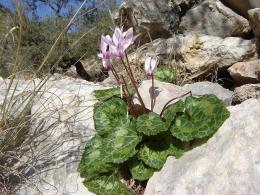
Homemade cyclamen is loved by many gardeners. It pleases with its delicate flowering on cold winter days and is not demanding of care. But there are pitfalls even when growing such an unpretentious plant.
Often lovers of indoor floriculture have to deal with the fact that cyclamen The leaves begin to turn yellow and dry out. Therefore, it will be useful to learn more about cyclamen, its types, cultivation and reproduction, diseases and insects that can harm the plant.
Content:
- About cyclamen
- How to grow cyclamen from seeds
- Reproduction
- What to do when cyclamen has bloomed
- Transfer
- Rules of care
- Diseases and pests
- How to save cyclamen from yellowing leaves
About cyclamen
This flower can be called one of the most beautiful and popular among indoor plants. Its homeland is the Mediterranean and the Middle East. Cyclamen is compact and picturesque.
It has dark green leaves with a white pattern on them; their edges can be fringed or simply smooth. Flower petals can also be simple or wavy. This is a tuberous plant.
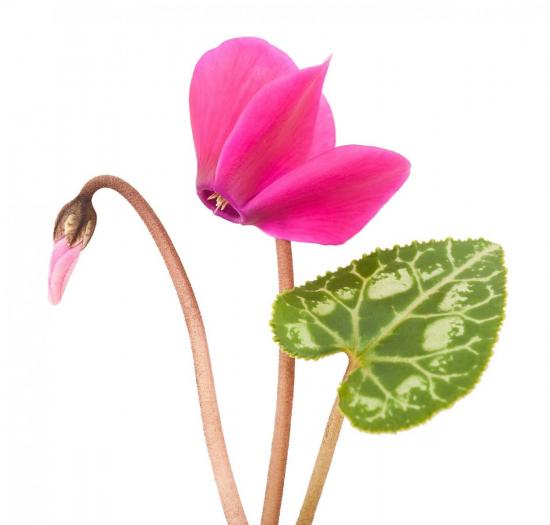
Two types are widely used in indoor floriculture cyclamens: European and Persian. The most common is Persian.
There are more than 50 varieties of this plant; they include different species.
The height of the plant can vary from 15 to 30 centimeters, depending on the variety.The petals of the opened bud are bent back. The color range of buds is very wide. They can be pristine white, flaming red, soft pink, dark purple... Their color depends on their belonging to one or another variety.
The foliage is usually round or heart-shaped. The surface of the sheet plate is decorated with marble stains, spots or a silver pattern.
How to grow from seeds
This primrose can be grown from seeds at home. Persian cyclamen reproduces very well by seeds.
The first step is to prepare the seeds and container. You need to buy seeds at a flower shop or collect them yourself from a plant that you already have. To do this during flowering you need to produce pollination colors.

They are pollinated by cross pollination. You need to take a cotton swab and transfer pollen from one flower to another. If the operation was performed successfully, after some time a box will form on the peduncle.
A month after formation, the box must be carefully tied with a piece of gauze so that the seeds, when it bursts, do not scatter in different directions. To plant, you need to take a small pot. It must have a drainage hole.
The soil substrate poured into the pot is moistened. Place on its surface seeds. The distance between them should be about 3 centimeters. Using a match, each seed needs to be buried 0.3-0.5 centimeters. Leave the container in a cool place, covered with a film that is not transparent. From time to time, plantings need to be watered and ventilated.
Within a month and a half, shoots will appear. After they appear, the film must be removed.
And when the plants have 3-4 leaves, they can be transplanted into individual pots for permanent residence.
Reproduction
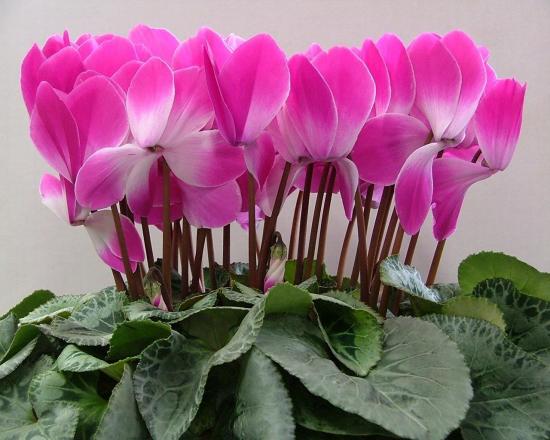
Cyclamen can be propagated by dividing the tuber during transplantation. It is very good when a flower has a daughter tuber. It can be cut in half at the time of transplantation, after the dormant phase is completed. Each piece of tuber must have roots and at least one growth bud.
It is imperative to treat the cuts with brilliant green or sprinkle with crushed activated carbon. You can verify the effectiveness of this method by using it. He works.
What to do when cyclamen has bloomed
When the dormant phase begins, the leaves of the flower begin to wither, turn yellow and dry out. Carefully cut or tear off what remains of the leaves and flowers. Be careful not to damage the plant tuber. When the resting phase begins, you need to reduce watering, but the substrate in the pot should not dry out.
Take it out cyclamen outside, if possible. Place it in a cool, shaded area. When you notice that the tuber has sprouted new shoots, this means that the dormant phase has ended.
It is not uncommon for a pot with a plant to be buried in a shady place. Replant when hibernation ends.

Transfer
It is better to do this in the summer, but only with the onset of the active phase. At the end of spring, flowering stops and a resting phase begins. At this time, watering is stopped, and the flower pot is placed on its side. Watering is resumed by July. With the appearance of the first leaves, the flower transplanted.
The pot should be much tighter for the tuber. It does not need to be buried to its full height. It should rise one third above the ground surface.There is no need to water the flower abundantly after replanting. The lump of earth in the pot should be slightly moist.
When the flower fully wakes up from sleep, actively producing new leaves, and has undergone adaptation after replanting, it can be watered normally and fertilized.
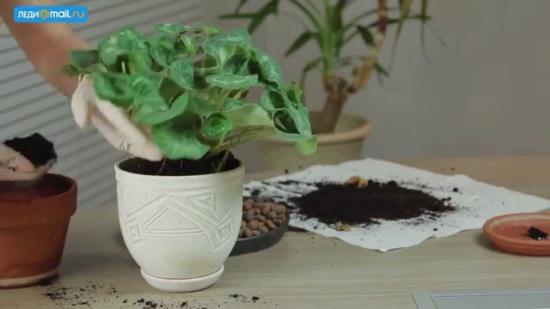
Rules of care
Usually these flowers are grown indoors. For this reason, it is very important to provide proper care for the flower. He needs care and the creation of the necessary conditions.
Temperature
Cyclamen prefers coolness. The air temperature in the room where it is located should be from 12 to 16 degrees Celsius. This plant does not tolerate drafts, but the room in which it is located must be ventilated.
Watering
The flower does not need to be sprayed abundantly, but during the period of active growth it requires regular and moderate watering, which must be done through a tray as soon as the surface of the substrate in the pot dries a little.
Lighting
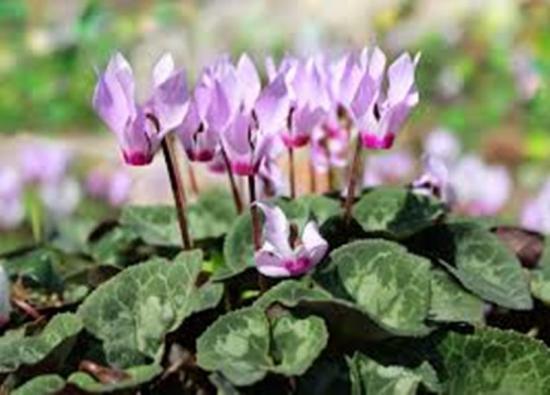
When providing proper care, cyclamen should be well lit, but it should not be exposed to direct sunlight. It is best when the lighting is diffused, but at the same time bright enough.
Air humidity
The room should have moderately humidified air. In summer, the space next to the flower should be sprayed, not forgetting to cover the plant from water droplets.
Fertilizer
Cyclamen needs to be produced regularly feeding. They can be introduced excluding the resting phase. In order for it to develop and bloom beautifully, it needs to be fed with phosphorus-potassium fertilizers no more than twice a month.
Diseases and pests
Like many indoor plants, it is susceptible to diseases and pest attacks.At home, it is necessary to provide comprehensive care, because many problems occur due to inattention.
Plants are often exposed to fungal infections, rot and harmful microorganisms.
In addition, there are diseases that appear due to pest invasion:
- cyclamen mite,
- scale insects,
- thrips,
- spider mite,
- aphids,
- mower weevil.

The presence of parasites is one of the reasons why curved flower stalks and twisted leaves appear.
If yellowing and wilting of the leaves are observed, this is because the plant is in bright sun, or is not sufficiently moistened, or it is hot.
The cause of rotting of leaf cuttings and peduncles may be due to severe waterlogging of the soil. To stabilize the condition of the flower, good drainage is required.
The reason for the lack of flowers may be dry air in the room or a fairly high temperature in it, excessive moisture, insufficient lighting or fertilizer.
The roots and tubers rot due to excessive watering or poor drainage; the water in the pan stagnates. The appearance of gray rot indicates low temperature and poor ventilation of the room.
If a flower is damaged by pests, it must be treated with special preparations:
- Akarin – against ticks,
- Antitlin - against aphids,
- Tanrek - against thrips.
How to save cyclamen from yellowing leaves
When the room temperature is elevated, the flower pot should be placed on an insulated balcony or loggia, in a winter garden or on a veranda, where the temperature is lower. It is necessary to maintain soil moisture at a sufficient level. It should not be over-dried or over-moistened. For glaze A suitable method is to immerse a pot with a plant in a container filled with warm water.
To increase air humidity, the space around the plant should be sprayed with water from a spray bottle. You cannot spray the plant itself - this is harmful to it.
In addition, the pot with cyclamen must be placed in a tray filled with moistened pebbles - this will increase the humidity and the conditions for keeping the plant will be optimized.
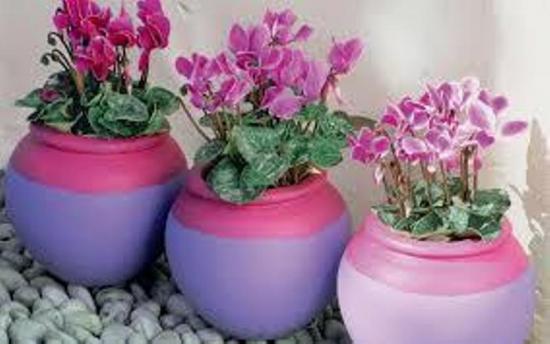
Excess moisture is no less dangerous. This factor can cause yellowing of the leaves, rotting of the roots, and molding of the substrate in the pot. To save the flower, it must be replanted in a fresh substrate and the yellowed parts removed. If it is not possible to buy a new pot for replanting, then the old one must be thoroughly cleaned, washed and disinfected with vinegar.
If the plant lacks nutrients, it is necessary feed using fertilizers purchased at a specialty store. You need to fertilize once every 10 days.
With the onset of summer, the flower should be moved to a place where it is cooler, watering should be kept to a minimum. Leaves that have dried out should be removed, and feeding the plant during its dormant period should be stopped.
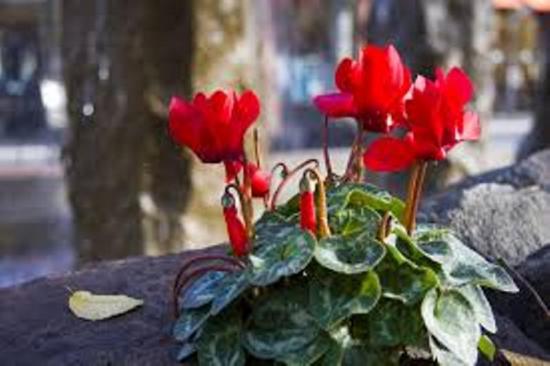
With the beginning of autumn, when you notice the appearance of young leaves, resume watering and fertilizing. Soon cyclamen will again delight you with its lush blooms.
Watch a video about the reasons for yellowing of cyclamen leaves:

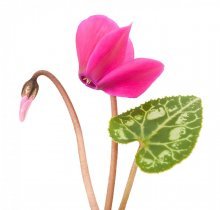
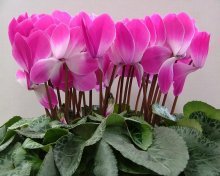

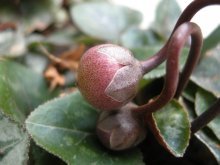
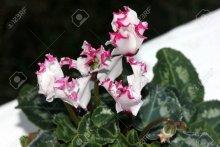
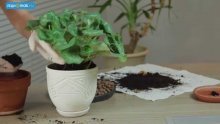
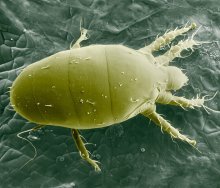

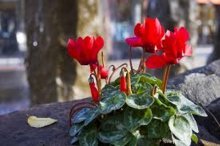
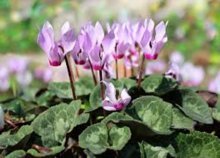

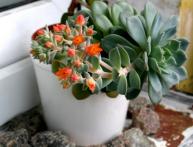
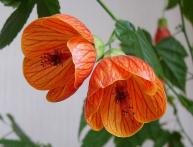

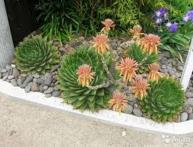


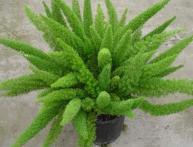
Comments
Cyclamen is a very beautiful flower and will bring a piece of nature and freshness into every room. It grows well for me, obviously the microclimate in the house suits it, since I have fairly moderate lighting and humidity thanks to the humidifier.